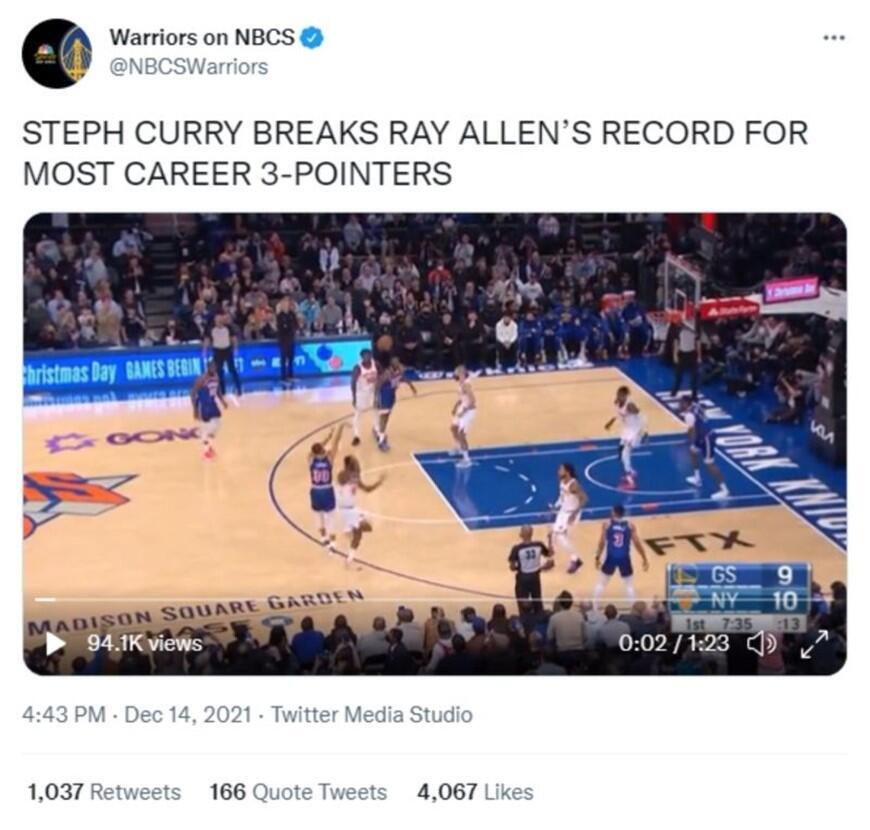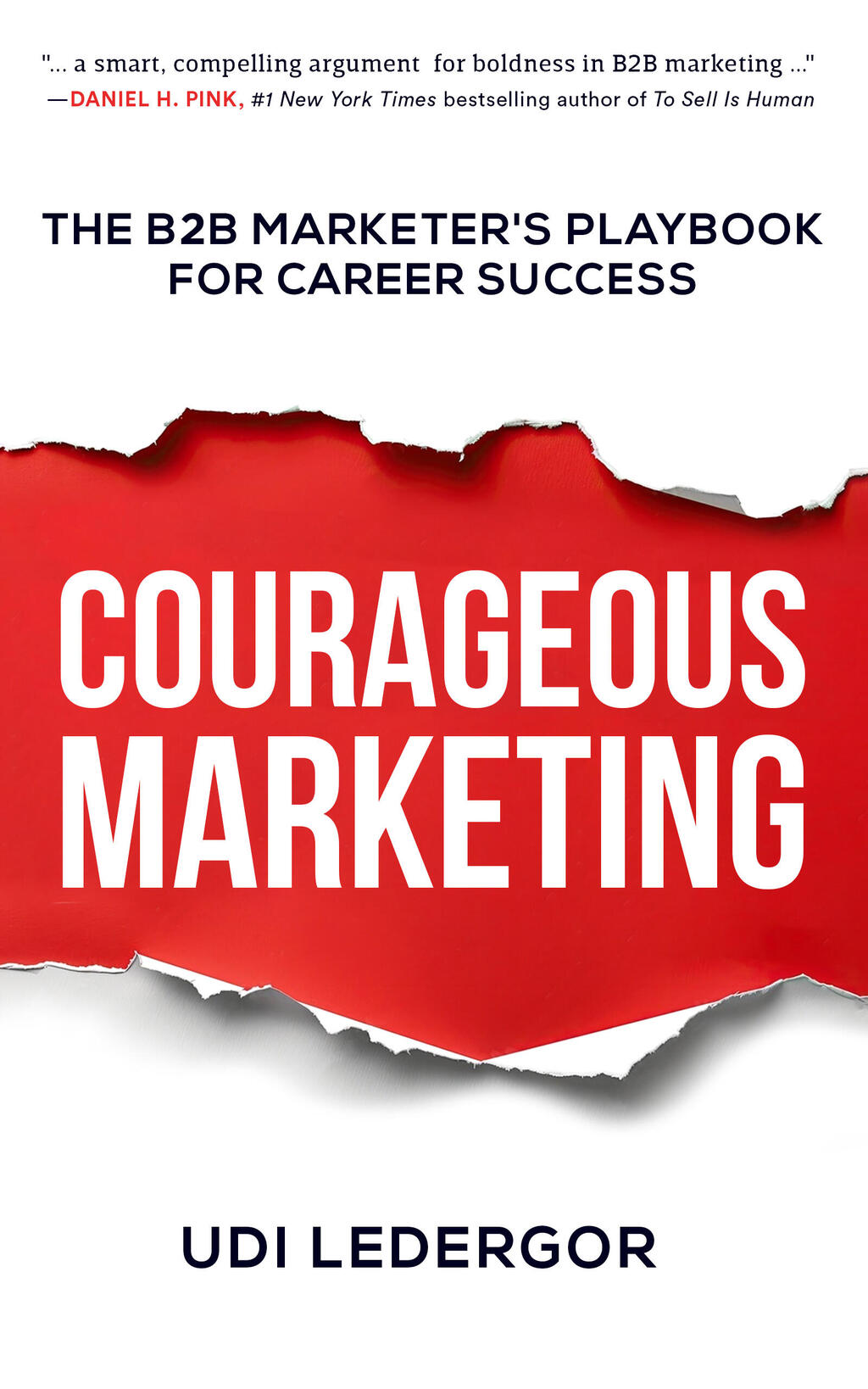Getting your Trinity Audio player ready...
“We had 15 seconds on a rotating billboard in Times Square. That’s it. But the photos? They made us look like we owned the place.”
Udi Ledergor remembers the exact moment Gong’s modest ad campaign in Times Square went viral on LinkedIn.
“We spent a few hundred dollars on a small digital billboard, took the right photos with foot traffic in the background—and suddenly people assumed we were investing millions in outdoor advertising.”
It wasn’t deception. It was strategy.
According to Ledergor, One of the biggest mistakes early-stage startups make is ignoring the power of branding. In this interview, Ledergor, author of the upcoming "Courageous Marketing" (out April 10), explains how small teams with limited budgets can create the perception of a much larger presence—without stretching the truth.
So how does a small company pull off the illusion of being big?
"It starts by understanding human psychology. People assume that visibility equals success. If they see your brand in the “right” places—Times Square, a glossy magazine, a TV screen—they believe you're established. So we focused on showing up in those places, but in ways that didn’t require massive budgets. I’m talking about offbeat, clever executions that photograph well and spark curiosity."
Like the Times Square billboard?
"Exactly. That was one of our earliest experiments. It wasn’t even a full takeover—just a rotating ad slot. But we captured it the right way and shared it online. It got way more attention on LinkedIn than it did in real life. That’s the game: do something small in the physical world, then blow it up online."
You mentioned “offbeat, clever executions.” What does that look like in practice?
"One time we sent out Gong-branded food delivery robots in San Francisco to surprise potential customers with pizza. I know—it sounds a little crazy. But it worked. People posted photos, tagged us, and the story spread on its own. It’s not about the scale. It’s about the story people want to tell."
Focus on shareability, not size
"Your marketing doesn’t need to be big—it needs to be memorable." Says Ledergor. "Something surprising, photogenic, or just clever enough that people want to talk about it. A robot handing you a pizza, for instance. So does a small billboard in a big location. If it looks good in a photo, it can punch above its weight online."
Was there a specific moment you realized this approach was working?
"Oh, definitely. We ran a local TV ad in San Francisco during the Super Bowl. People assumed it aired nationwide and cost us millions. In reality, we paid around $250,000 for regional placement—just in cities where our potential buyers lived. The day after the game, our site traffic spiked, demo requests shot up, and that week we hit a record in new pipeline.It looked big, but it was laser-focused."
concentrate your efforts where you can actually stand out
Instead of spreading your budget thin across many markets, concentrate your efforts where you can actually stand out. Ledergor: "Focus on one city, one platform, one audience segment—and do something unforgettable there. It’s better to be famous in one zip code than invisible in fifty."
Let’s talk budget. These ideas are creative—but how do you actually fund them?
"I used to carve out 5 to 10 percent of my annual marketing budget under a line item called “Marketing Experiments. It was real money, and it gave us room to test things that didn’t fit into the usual playbook. It also made it easier to get approval—because we’d already planned for it. No need to argue every time a new opportunity came up."
Budget for curiosity
Don’t wait for permission to experiment—bake it into your plan. "Allocating a small part of your budget to test bold or unconventional ideas gives your team room to learn, iterate, and spot what might become your next big channel." Says Ledergor.
So the “experiments” budget also helped you stay flexible?
"Exactly. Let’s say an industry event pops up mid-year and it’s perfect for your audience—but it wasn’t around when you finalized the budget. If you have a built-in buffer for experiments, you don’t need a special approval cycle. You just do it. We used it for things like wrapping Uber and Lyft cars during Dreamforce. Instead of paying for a tiny booth at the event, we let our brand move through the city.
Plan for the unplanned
Marketing doesn’t sit still. New events, trends, and opportunities will come up that weren’t on your radar six months ago. Ledergor: "Build enough flexibility into your budget to act when the timing is right—even if the plan wasn’t there from day one."
You’ve talked a lot about brand perception through paid campaigns. But what about organic visibility—how do you get people to share your story for you?
"You have to give them something they want to share. Recognition works really well. We created customer awards—not flashy or fake ones, but genuine recognition based on usage, innovation, or results. It gave our customers a reason to post about us without us asking. Same with employees. When you spotlight someone for doing great work, they’ll often share it. And when they do, it sends a strong message about your culture and values, even if that wasn’t the original goal."
Make people proud to share
Recognition isn’t just feel-good—it’s strategic. Customers are more likely to amplify your brand when it makes them look smart, successful, or ahead of the curve.
Ledergor: "Employees will share if it reflects well on who they are and where they work. Design your content to serve their identity—not just your message."
So in the end, what’s the real value of making your company look bigger than it is?
"Perception opens doors. Big companies prefer buying from other big companies. But early-stage businesses don’t have time to wait until they become big. So instead, we crafted the perception of scale. Not by pretending—but by showing up in the right places, with the right messages, in ways that spark attention. It gave us access to buyers we might not have reached otherwise. It made us seem like a safer bet.
"You don’t need to fake it—but you do need to frame it. Strategic visibility can make a small company feel established enough to win deals, attract talent, and command attention. It doesn’t replace product-market fit—but it gives you more room to find it".
Want to try it yourself? Here’s the six-step framework of Ledergor
If you’re a small team looking to create outsized brand perception, start here:
Pick an offline medium: Choose something usually reserved for big brands—like a billboard, print ad, or local TV spot.
Buy a small version of it: Look for the most affordable option: regional editions, rotating ads, or unconventional placements.
Get creative with the message: Feature a customer story, a bold visual, or something unexpected that grabs attention.
Photograph it well: Frame it to look as impactful as possible—crowds, context, and timing matter.
Share on your company’s social media: Use LinkedIn, X, Instagram—whatever your audience sees. Don’t rely on the offline impression alone.
Activate employees and customers: Encourage your team and loyal users to amplify it. People love sharing what makes them look good, smart, or early to something new.
You don’t need millions to feel bigger: You just need to show up in the right places, with the right kind of story.
Taking place on May 8 at Cinema City Glilot, SHOW 2025 will feature top speakers from Israel and abroad, delivering eye-opening talks. Sessions will include in-depth analyses of branding moves that helped startups scale into global companies, step-by-step guides to building disruptive and standout tech brands, and key insights into branding in the age of AI.
The event is geared toward marketing, brand, and product managers, entrepreneurs, and anyone looking to expand their approach to branding.





